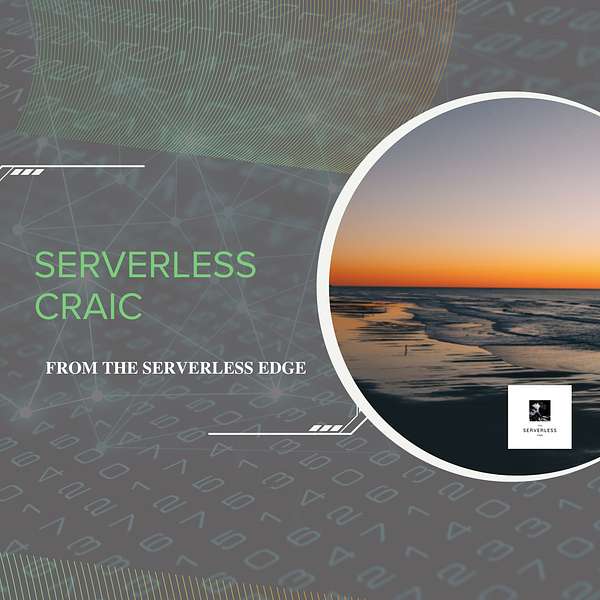
Serverless Craic from The Serverless Edge
Welcome to Serverless Craic from The Serverless Edge with Dave Anderson, Mark McCann and Mike O'Reilly. We want to share our tools and techniques so that you can use them to communicate your Technical Strategy with your C-Suite and business owners. We want to help you to build a serverless first organisation. We will show you how to use Wardley Mapping to gain situational awareness of where your cloud applications and business are. And then how to develop your technical capability in away that builds engineering standards to set your organisation up for sustainable success.Sounds like the tools and techniques that you need - then hit the subscribe!-ABOUT- Dave, Mark and Mike are senior technical architects/leaders passionate about driving technical strategy. They have led transformation journeys, technical excellence, cloud adoption and tech strategies in many industries.Active in various technologies including ML/AI, Public Cloud (IaaS, PaaS, SaaS), Engineering, Product, Cyber and UX.
Serverless Craic from The Serverless Edge
Serverless Craic Ep59 How to Wardley Map
Wardley mapping is a strategic tool to visualise the evolution of products or services.
The two axes of a Wardley Map are visibility and evolutionary stage.
Products and technologies evolve through four stages:
- Genesis,
- Custom build,
- Product or rental, and
- Commodity or utility.
Understanding context and phase of adoption is crucial in the business world, especially with AI and LLMs.
Identifying and moving commodities versus custom-built solutions is important, and optimizing organizational structure for autonomy involves concepts like movement, time planning, and sub-maps. We explain the anatomy of a Wardley map, starting with the anchor (customer) and emphasising the importance of understanding the map's axis and how space and position have meaning.
Evolution of technology from Genesis to Commodity, with stages of Custom Build and Product.
Product evolution from Genesis to Custom, Commodity, and ubiquity, tailored to specific contexts.
We explain the evolution of products through usage and competition and product evolution is context-dependent.
Leveraging AI and LLMs in business contexts.
We highlight the varying perceptions of LLM and Gen AI across different contexts and note that DBT is marketed as a product or consumer depending on the context. We discuss the importance of understanding user needs and dependencies in designing a successful product.
Mapping components to move from custom-built to commodity products.
We look at the importance of mapping components to move a business forward and identify inertia as a challenge in moving components, and discuss ways to overcome it.
The conversation highlights the importance of leveraging commodities and building a database in 2024. We discuss the evolution of AI, from its early stages to its current utility, and the importance of having the right team types, including explorers, settlers, and time planners. We emphasise the need for all three team types, as each one plays a crucial role in the AI development process, and spikes in team performance can be identified and addressed accordingly.
Mapping for autonomous organisations, including optimisation, movement, and sub-maps.
We look at the importance of optimising for movement in engineering teams, with different strategies for 'pioneers', 'settlers', and 'villagers'. And the need for organisation-wide alignment and the use of mixed methods within Wardley Mapping, with a focus on stacking boxes when necessary.
We look at the importance of mapping in software development, highlighting different types of maps and their uses.
And we provide tips for creating effective maps, including using sub-maps for detailed areas and avoiding too many components on the map.
Wardley Mapping Resources: Ben Mosior and https://learnwardleymapping.com/
Serverless Craic from The Serverless Edge
Check out our book The Value Flywheel Effect
Follow us on X @ServerlessEdge
Follow us on LinkedIn
Subscribe on YouTube